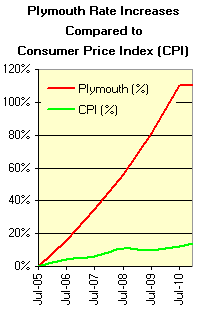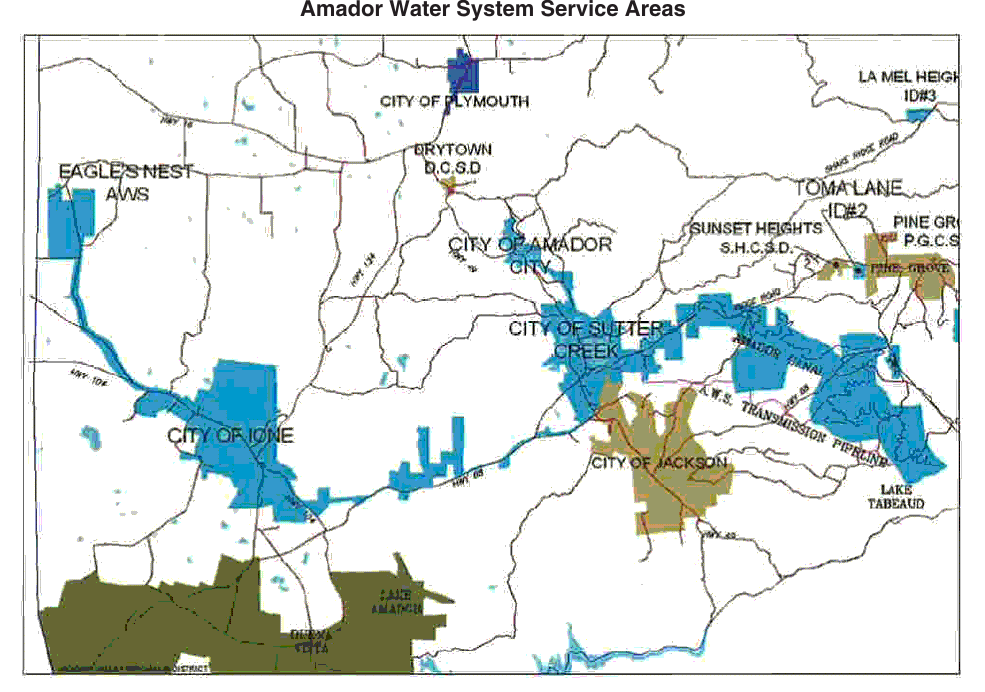
About Plymouth's Water SystemIf you have public water in Plymouth, you buy your water from the City of Plymouth. The City maintains all of the water lines that distribute water throughout Plymouth and the City of Plymouth is responsible for water quality monitoring, reading your meter, and sending you the monthly bills. Plymouth buys the water they sell to you from Amador Water Agency (AWA). Amador Water System (AWS) is the system within AWA that is responsible for water that goes to Jackson, Ione, Sutter Creek, Plymouth, Drytown, Amador City and Martell. This system also serves untreated water from the Amador Canal to customers between Lake Tabeaud and Sutter Hill. AWS transports the raw water from lake Tabeaud via the Amador Transmission Line to Sutter Hill. At Sutter Hill, some of the water is treated and stored for distribution to Plymouth and other customers. Untreated water is piped from Sutter Hill to Ione and then treated for use in Ione. |

How Ratepayers are AffectedIf either the City of Plymouth or AWS does not operate efficiently, costs to ratepayers will be excessive. In 2010, Plymouth switched from wells and connected to AWS for its water source. Beginning in 2006, Plymouth rates were adjusted in anticipation of the increased expense of AWS water. A 5-year 110% rate increase was approved by the City Council in 2006. Plymouth’s high water rates are partly due to the cost of design, planning and construction of the Amador Transmission Line (ATL) that was completed in 2007. The ATL was built to supply three times the capacity that is needed on the system today. Because the project was overbuilt, ratepayers are paying for a project that is three times larger than needed. Ratepayers would save over $1,000,000 per year if the cost of the ATL was split fairly between them and future customers. $1,000,000/year amounts to about a 20% reduction in water rates needed on the AWS. Plymouth ratepayers have an additional burden. The $12 million pipeline that was built to bring water to Plymouth will supply more than 3 times the water that is being used in Plymouth. The additional capacity will be used for future development. In the mean time, Plymouth ratepayers will pay the entire pipeline mortgage ($190,000/year). The subsidy amounts to about $240/year for each ratepayer in Plymouth. Plymouth ratepayers are also affected by special deals for selected developers. The infrastructure needed to treat and deliver water is very expensive and has been paid for by ratepayers. Ratepayers pay for the extra capacity that is built into most improvements with the expectation that new development will reimburse the ratepayers for the capacity they invested in. Unfortunately, the AWA board can (and does) sell the infrastructure for as little as half of what it is worth. Recently, the AWA Board gave a $500,000 discount to JTS Communities, Inc. (Castle Oaks in Ione) on connection fees. $500,000 amounts to over 10% of the annual cost of water on AWS. |




